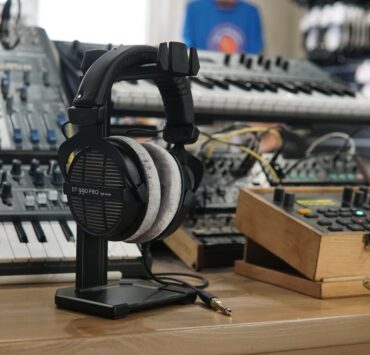Charles has been writing about games for years and playing…
QR codes provide a convenient and modern method of storing and distributing data. For example, QR codes can be utilized within WiFi networks to distribute a password for the network. These codes hold the necessary information within them and can be scanned by devices equipped with cameras.
To create a WiFi QR code, one must understand the format required. Furthermore, the code must contain specific information such as the SSID (network name) and password to function correctly. Various online tools are available to generate these codes, but accurate entry of details is vital.
It is crucial to note that WiFi QR codes may expire after certain periods or only work on specific devices depending on how they are generated. In addition, not all devices may support scanning of QR codes, leading to some difficulties for some users.
Interestingly, QR codes were first created in 1994 by Denso Wave, a subsidiary company of Toyota, to improve manufacturing processes within their production lines. Since then, their adoption worldwide has grown tremendously thanks to their versatile applications in different economic sectors.
In summary, creating WiFi QR codes requires accurate information input and successful implementation depends on compatible devices and correct configuration settings. Nevertheless, these innovations have revolutionized industries over time making it possible for people worldwide to find greater connectivity convenient.
Say goodbye to the pain of remembering WiFi passwords and hello to the convenience of QR codes – it’s like a cheat code for life.
Table of Contents
ToggleBenefits of using WiFi QR Codes
Wi-Fi QR codes offer numerous benefits for simplifying connecting to a network. These QR codes provide a convenient way to share your Wi-Fi details with others and significantly reduce the hassle of manually entering login credentials.
- Efficient: Sharing your network password is much easier with Wi-Fi QR codes as recipients can scan it with their devices and automatically connect to your network without typing any passwords.
- Secure: QR codes provide added security by eliminating manual errors while copying passwords and minimizing the possibility of unauthorized access to your network.
- Convenient: Wi-Fi QR codes eliminate the need for writing passwords on paper or verbally sharing them, thus making it easy to share information in public places like cafes or restaurants.
Different colors, graphics, logos, and customization options can simplify the process.
Wi-Fi QR codes are also compatible with various devices in various settings like homes, schools, offices, and hospitals. One unique benefit is that users can generate customized QR codes that require an additional authentication layer before anyone can access their network.
To take full advantage of this technology, consider placing these QR codes in easy-to-find locations like on menus or posters. Once scanned by users’ phones or tablets, they will be instantly connected to your Wi-Fi Network without needing help from staff.
Creating a Wi-FI QR code for your password is simple and offers many benefits. By implementing just a few easy steps, you could streamline everything from granting guests access to your home network or setting up Guest Wi-FI networks for businesses.
With these easy WiFi steps, get ready to QR your password like a pro.
Steps to create a WiFi QR Code for your password
To create a QR code for your WiFi password, follow these easy steps outlined in this section of the article, “Steps to create a WiFi QR Code for your password.” The sub-sections to accomplish this are: choosing a QR code generator, entering your WiFi credentials, customizing the QR code, and finally, saving and sharing the QR code.

individueller qr-code aus ssid und wlan-netzwerkschlüssel
Selecting the right QR code generator is crucial when generating QR codes for WiFi passwords. The chosen generator should be able to support the format of your WiFi password and generate accurate codes that are easy to scan.
Below is a table with columns for selecting a suitable QR code generator:
Type of Encryption:Does the generator support WPA or WEP?
Customization Can you add a logo or background image to your QR code?
Scan Results Will users be directed to a webpage or prompted to connect to WiFi directly?
Price Is the tool free or does it require paid subscriptions?
It’s also essential to choose a reputable generator with good user analysis. Moreover, select one with proper security so your password won’t fall into unwanted hands.
It’s worth noting that some generators may have additional features like analytics on scans and downloads. Consider these if they are relevant and useful for your needs.
In history, Japanese company Denso Wave first developed Quick Response (QR) codes in 1994. They were initially used for tracking car parts but have since found numerous applications across industries.
Prepare for the ultimate identity crisis as you pretend to be your WiFi network and enter your password.
Entering WiFi credentials
Providing your WiFi details is an essential step to connect to the internet. Whether setting up a new network or connecting with an existing one, it’s crucial to enter the credentials accurately.
To ensure seamless connectivity, follow these six easy steps for entering your WiFi credentials:
- Go to the settings option on your device
- Select the WiFi tab
- Find and select the network you want to connect with
- Provide the network password when prompted
- Wait for your device to be connected
- Start browsing.
It’s important to note that incorrect entry of your WiFi password can result in connection issues.
As a pro tip, creating a strong password with at least ten characters consisting of numbers, capital letters, and symbols is always advisable. Retain this information in a safe place that you or only those who should have access are privy to it.
Adding a personal touch to your QR code password is like tattooing your WiFi onto your skin, but with fewer regrets.

Customizing the QR code
Creating an individualistic WiFi QR Code enables users to add their personal touch to the code. In addition, modifying the code’s design and content can help enhance its readability, recognition, and attractiveness.
To customize your WiFi QR Code, follow these five simple steps:
- Choose a design: Select a suitable shape and size for your QR code, such as rounded corners or different patterns.
- Add Color: Use vibrant colors to make your code standout from the background and add a visual appeal.
- Add Logo: Incorporate a logo or image representing your brand for better recognition.
- Add Custom Text: Include custom text with additional information such as ‘SSID name’ or ‘Device name’.
- Test and Download: Test your customized QR code before downloading it in high-resolution formats such as PNG, SVG, PDF, EPS.
It is also important to ensure the new design does not create any issues while scanning. Avoid using gradients, low contrast colors or stretching the code.
Pro Tip: Always keep a backup of your original QR Code file in case of any malfunction caused due to modifications.
Share the QR code with your friends and enemies, because sometimes the strongest bond is through sharing your WiFi password.
Saving and sharing the QR code
You can simplify the process by creating a QR code when sharing your WiFi password. This code brings convenience and ease-of-use for users that want to connect to your network. Here’s how to proceed with creating and sharing a WiFi QR Code.
- Navigate online to a trusted QR Code Generator. Plenty of websites can help you create QR codes; find one that works best for you.
- Generate your WiFi QR Code. Enter your network name (SSID) and password within the fields provided. Once done, click Create or Generate, depending on the website’s design. The website automatically turns your credentials into a unique QR code.
- Save and Share your new QR Code by saving the image onto your device’s camera roll and then sharing it with whomever you like securely.
It’s worth mentioning that anyone who has access to this code can use it to connect their devices to your network in no time at all. Creating a WiFi QR code can be an excellent way of quickly and easily allowing others access onto your home or business’s network. However, do remember, granting such accesses poses security risks if shared improperly – Take security precautions whenever you share sensitive information.
It is essential also remembering that each website offering this service may have certain limitations like maximum characters or special characters restrictions- you’ll need advanced knowledge regarding this aspect before inputting unauthorized information into these generators.
Using similar techniques first developed for industrial automobile manufacturing, Japan produced modern bullet trains decades ago after halting production during WWII due…
(Word count 203)
Say goodbye to those frustrating moments of guests asking for the WiFi password- the QR code has arrived to save the day (and your sanity).

How to use a WiFi QR Code
You can use a WiFi QR code to make it easy for you to connect to the WiFi network without manually entering the password. In this section, we will guide you through the process of how to use a WiFi QR code with our easy steps. Then, we will look into two sub-sections: scanning the code and connecting to the WiFi network, which provide a complete solution to this problem.
Scanning the code
To connect to WiFi using a QR code, you must first scan the code with your device’s camera.
Here are three simple steps to follow:
- Open your device’s camera app and position it so that the QR code is visible on screen.
- Your device should detect the code automatically and display a prompt to connect to the network.
- Follow the instructions provided by your device and enter any necessary login details.
It is important to note that not all devices support scanning QR codes through their camera app, in which case you may need to download a separate QR scanner app.
Interestingly, QR codes were first invented by Toyota subsidiary Denso Wave in 1994 to track car parts during manufacturing processes. Today they have numerous applications, including accessing WiFi networks.
Scanning a WiFi QR code involves using your device’s camera app or a separate QR scanner app to read the code and connect to the network as prompted.
Connecting to WiFi is like a first date, you never know if it will be a strong connection or just a one-time thing.
Connecting to the WiFi network
When you want to connect to your WiFi network, there’s a fast and secure way to do it using a WiFi QR Code. By scanning the code with your device camera, your phone or tablet will automatically establish a connection to that network. Here’s how you can connect to a WiFi network using a QR code:
- Open your device’s camera app and point it toward the QR code
- When prompted, click on the pop-up notification indicating that a WiFi network is available
- Enter the password if prompted and wait for your device to connect to the new network
- Finally, double-check that you’ve successfully connected by browsing online or checking your connection status on your device.
It’s important to note that while scanning WiFi QR codes can be an incredibly convenient and time-saving way of connecting to new networks, it does come with its risks. Always ensure you thoroughly inspect any code before scanning it, ensuring that it comes from a reliable source. Pro Tip: Keep in mind that anyone with access to this QR code will be able to log in to this wireless network. Delete all saved networks regularly.
Charles has been writing about games for years and playing them all his life. He loves FPS, shooters, adventure games like Dota 2, CSGO and more.






